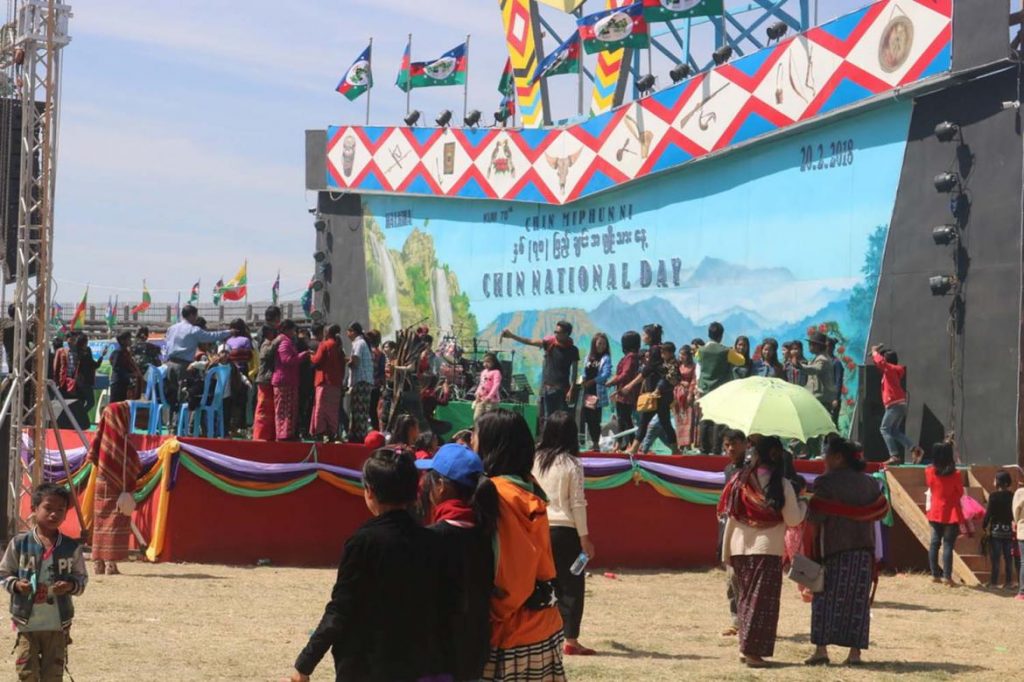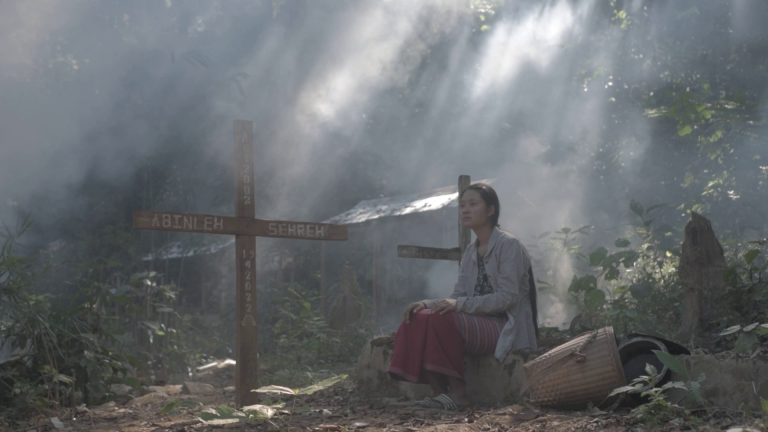Formerly banned by the military, Chin National Day has been proudly celebrated since a bilateral ceasefire was signed in 2012, but efforts to observe it this year in southern Chin State have been thwarted by armed conflict.
By SALAI ZA UK LING | FRONTIER
THE NORTHERN Chin State town of Thantlang has been chosen as the venue for inaugurating the 72nd Chin National Day on February 20, which is celebrated throughout the mountainous state bordering India. Though the residents of Thantlang are likely excited to be hosting this year’s inaugural events, they were not originally supposed to play host.
That honour was meant to go to the town of Paletwa, in far southern Chin bordering Rakhine State, but the state government decreed last October that the events be shifted to Thantlang because of fighting between the Myanmar military and the Arakan Army.
This happened the last time Chin National Day was supposed to be inaugurated in Paletwa, in 2017, and for the same reason. The venues for the last two years were Falam and Hakha.
After the Chin National Front and the Union government signed a bilateral ceasefire agreement in 2012, the venue for inaugurating the state-wide celebrations has been rotated to give each of the state’s nine main towns an opportunity to host.
Support more independent journalism like this. Sign up to be a Frontier member.
Each time, the inauguration ceremony is followed by traditional dances and other cultural performances, alongside sporting events such as wrestling and horse racing. All three Myanmar presidents since 2013 have inaugurated the celebrations in Chin State, and State Counsellor Daw Aung San Suu Kyi has opened parallel ceremonies in Nay Pyi Taw.
Suppressed and then banned under military rule, reviving the national day celebrations was an important element of the bilateral ceasefire agreement with the CNF, which took up arms in 1988 to fight for democracy and autonomy for the Chin people.
During the period of parliamentary democracy between independence in 1948 and the seizure of power by General Ne Win in 1962, Chin National Day was recognised as a national holiday. The first celebration in 1951 was inaugurated and attended by then prime minister U Nu in Mindat. After the overthrow of Nu’s democratically-elected government, Ne Win’s Revolutionary Council annulled the status of Chin National Day as a national holiday.
Three decades later, the attitudes of Myanmar’s military rulers towards expressions of ethnic nationalism had only hardened. In 1994, the military junta imposed a complete ban on Chin National Day celebrations. Instead, the Chin people were required to celebrate February 20 as Chin State Day, an event with more of a geographic basis. Grand celebrations were held throughout Chin under the banner of Chin State Day with high-ranking military officials giving speeches loaded with historical revisionism.
The irony was that, despite the regime’s insistence that “Chin State Day” had been celebrated in this way since 1948, there was already an occasion called Chin State Day on a different date, January 3. This commemorated when the Burma Socialist Programme Party under Ne Win granted the Chin people formal statehood in 1974, upgrading the territory’s previous status from what was called the Chin Special Division.
Rather than forestalling Chin ethnic nationalism, the ban on Chin National Day backfired by inflaming public sentiment. In open defiance of the orders, Chin university students throughout the country held separate private celebrations under the Chin National Day banner. There were incidents in which student leaders clashed physically with military intelligence officers who came to disrupt the events. Were they not university students, whom the authorities tended to treat or handle with more care and leniency, many protest leaders at the time may have been arrested and jailed.
The question then arises: Why would the military regime at the height of its power go to such lengths to try to erase Chin National Day from people’s memory and replace it with a revised version of history?
A likely reason for the regime’s apprehension is that Chin National Day represents democracy, self-determination and Chin people’s unity against collective historical injustices – all of which stands in direct opposition to military dictatorship.
On February 20, 1948, more than 500 delegates from throughout the present Chin homeland convened a Chin National Conference where they overwhelmingly voted to abolish an age-old traditional feudal system in favour of a democratic system of government. Before independence, the British had ruled the Chin under the Chin Hills Regulations Act, which accorded traditional chiefs much of their pre-colonial powers.
The day came to be known as Chin National Day following a unanimous decision by the Chin Affairs Council, today’s equivalent of the Chin State parliament.
In common with other non-Bamar ethnic nationalities, the Chin people never felt their aspirations for self-determination were truly accommodated in the Union. Although they were signatories of the Panglong Agreement – the founding document of the Union – the constitution of 1947 did not accord the Chin full statehood, unlike the Kachin and Shan. The Chin Affairs Council of the Chin Special Division acted as a Chin parliament of sorts, but it was headed by a Chin affairs minister directly appointed by the Union prime minister. While the 1974 constitution granted Chin statehood, in reality it concentrated all powers in the Council of State, which was dominated by senior Bamar military officers.
Despite this legacy of betrayed hopes, the Chin take great pride in their national day and celebrate it each year, whether they are at home or in exile throughout the world. It was precisely because of its political importance that the CNF negotiated the inclusion of Chin National Day celebrations in the ceasefire agreement.
However, the new-found peace and relative calm in Chin under the ceasefire agreement, and the prospect of observing and celebrating the national day with dignity and without fear of disruption, seem to be fading in parts of the Chin homeland. The planned celebrations in Paletwa have became collateral damage in a conflict that has little to do with the Chin people.







